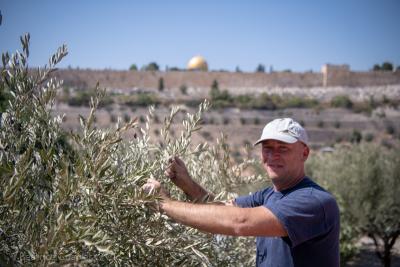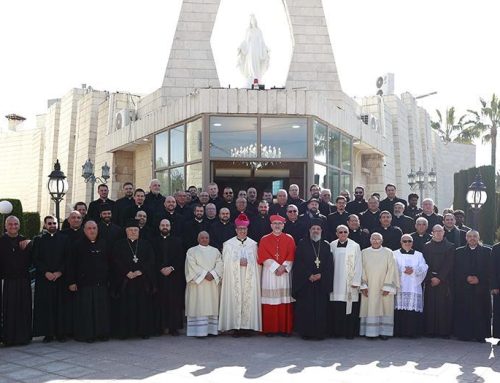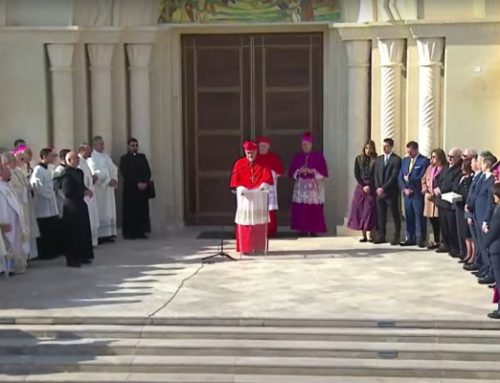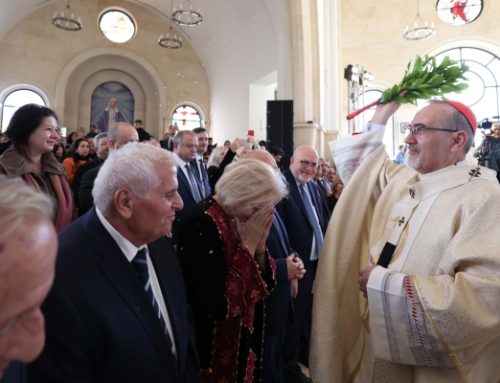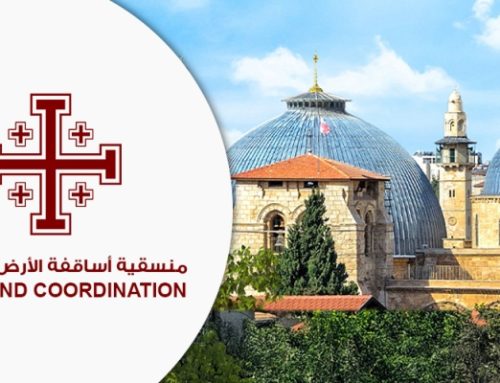The start of the autumn in Jerusalem marks the time for the olive harvest in the garden of Gethsemane, on the slopes of Mount Olive. The annual harvest of the fruit takes place in the sacred area next to the shrine, but also in that of the hermitage of Gethsemane, above the convent and which hosts people who wish to spend a period of time in spiritual retreat. For the many volunteers that take part, the harvest is a unique opportunity to spend a day in contact with nature and with a place that was dear to Jesus. Before being questioned, flailed and put to death, Jesus retreated to this place, to pray intensely to the Father and prostrated himself in the midst of the olive trees. Gethsemane (Gat Shemanim, “olive press”) was a place where oil was produced, as confirmed by the recent discovery of a ritual bath from the times of Jesus. The Jewish laws on purification required the workers involved in oil and wine production to have purifying baths before starting their work.
Today, as two thousand years ago, in the area of the Gethsemane there are still many olive trees, surrounding what is called the Basilica of the Agony or the Church of the Nations. The vocation of the place to attract people from all over the world is also shown by the name and it continues to be very topical.
“On the first day of the harvest, we had about thirty people from about fifteen different countries,” said Fr. Diego Dalla Gassa, in charge of the hermitage of Gethsemane. “The topic with which we opened the day was: to build new bridges and seek the things that unite us.” Picking olives in a place the Lord loved and seeing the presence of people of different nationalities, according to Fr. Diego, is very important. “We have found something that unites us, a reason that has called us here and that has allowed us to gather in the garden of Gethsemane,” he continued, “in a country where the differences and rivalries are marked, I think that it is a beautiful thing to perceive the invitation to discover the beauty of the things that unite us. There were people of other Christian confessions and non-believers and we were together. For them it became a day on contact with nature, for us it was an important moment, a moment of the family.”
Fr. Diego knows all the olive trees in the garden of Gethsemane very well as he has performed service in the place for more than ten years. “The experts say that the harvest varies from one year to the next, alternating between good years and years that are not as good. This year the trees have produced less, but theirs is always a blessed fruit, even though the olives are small.” This could also be due to the little rain that has characterized this year and that deprived the olive trees of the water necessary to develop larger fruit.
After the olives of the hermitage have been harvested, it is possible to make the oil at once, thanks to the small olive press which is in the garden. “We do not want to commodify the sacred, so we give the oil to the other Franciscan convents,” said Fr. Diego.
The trees in the sacred garden next to the church of Gethsemane are looked after by Fr. Jad Sara. There he uses a different method of pressing the olives, as first of all the stones are removed to be made into rosaries. The oil, on the other hand, is stored in small vials and is used for sacramental purposes.
“Since 2018 we have been coming every year with my family to harvest the olives here in Gethsemane,” explained Zuzanna, a volunteer who comes from the Czech Republic. Amy, from the USA, took part for the first time only this year. “It is wonderful for me to be here and do this gesture which is so simple yet so important, like harvesting the olives, exactly as in the times of Jesus.”
Beatrice Guarrera

